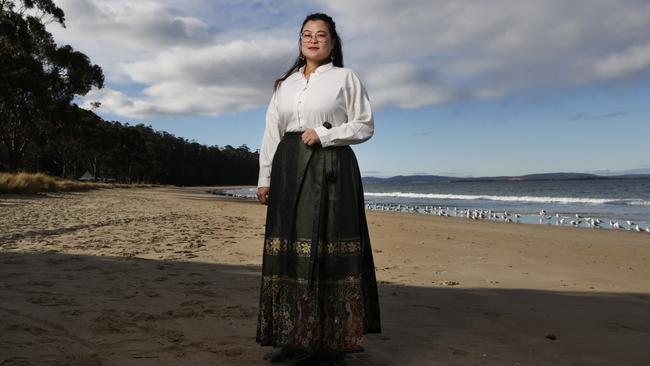
Ten years ago, Jan Everett stood in front of an old gate, on the side of a dusty dirt road, clutching a piece of paper with Chinese characters written on it, with tears streaming down her face.
Because the Tasmanian descendant of Chinese tin miners was not only in China, a country she loves and has visited about 25 times since the 1980s, but for the first time she had managed to find the family village her forebears hailed from.
“Everyone said ‘you won’t find it’,’’ Everett, now 75, recalls.
“And I had actually started to think I would never find it.’’
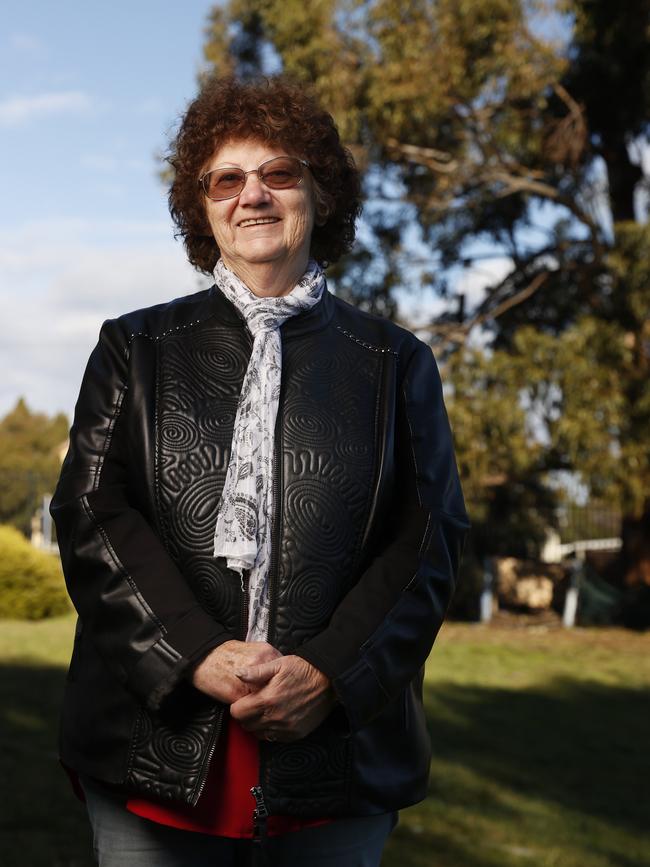
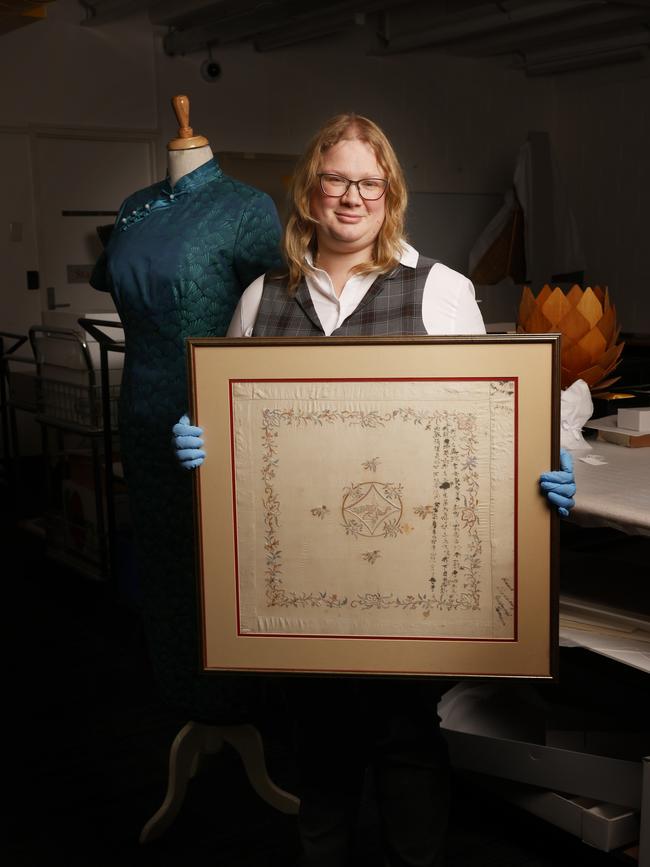
But having grown up enjoying Chinese food and customs, and hearing stories from her grandmother about her extended family, her grandfather’s village in China and her family’s early settlement in Tasmania in the 1870s, Everett had clung to hope that she might one day visit that village.
It was a feat that was only made possible due to a silk handkerchief, once owned by Everett’s grandfather, Maa Louey, which was handed down to her as a family heirloom.
On that hanky, in around 1909, Everett’s great grandfather, Ma Sui, had handwritten the family lineage in Chinese.
Translated into English, the text reads:
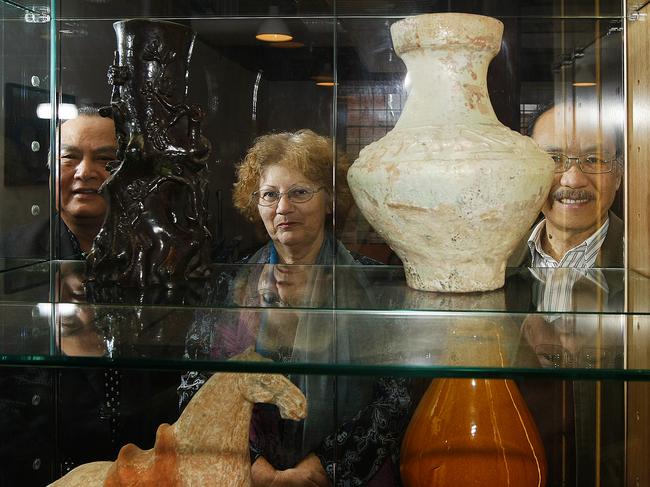
Ma Sui his other name Gum Yin.
Chinese wife’s name Yu.
Family origin was Toi San.
Family lived in Nan Long Cun near Baksa, See Yup Districts.
He had a large family in Australia.
My grandfather’s name Bing Wah, his mother English women.
At time of writing China has a lot of fighting.
You can come back to China as there is land for you.
From this, Everett, a member of the Chinese Community Association of Tasmania, was able to locate the family village.

The handkerchief will be one of many items of cultural significance on display as part of the Home: Here and Now exhibition, which will launch at the Tasmanian Museum and Art Gallery in coming days, celebrating the way Chinese descendants live and belong in Tasmania.
Not willing to risk taking the prized handkerchief to China – as it is one of her most treasured possessions – Everett called on a friend with Chinese language skills to write the characters from the hanky onto a piece of paper which she could take to China with her.
She was holidaying in Guangdong, in Southern China, with a different friend, and together they went searching for the village.
They caught one bus and travelled for about 90 minutes, then another bus, travelling for a further 30-40 minutes, each time showing the bus driver the name of the village written on the paper Everett was clutching.

“We were on a little dirt road and the driver pulled up in the middle of nowhere and beckoned for us to get off the bus,’’ Everett recalls.
“I was just standing there, wondering what to do next, and then I turned around and saw a gate … when I spotted the characters on the gate (which matched the characters written on the piece of paper she was holding) I started to cry.
“I didn’t think I’d ever find it.’’
The two women walked along the road, which branched off in two directions. And as they were deciding where to go next, two men on motorbikes pulled up.
Everett showed them her piece of paper and they beckoned for the women to get on the back of the motorbikes.
Everett laughs at the memory – two women, one in her mid-60s and one in her 70s, clambering onto the back of motorbikes with strange men – but the kind strangers took the women to the village, where they spent the day exploring.
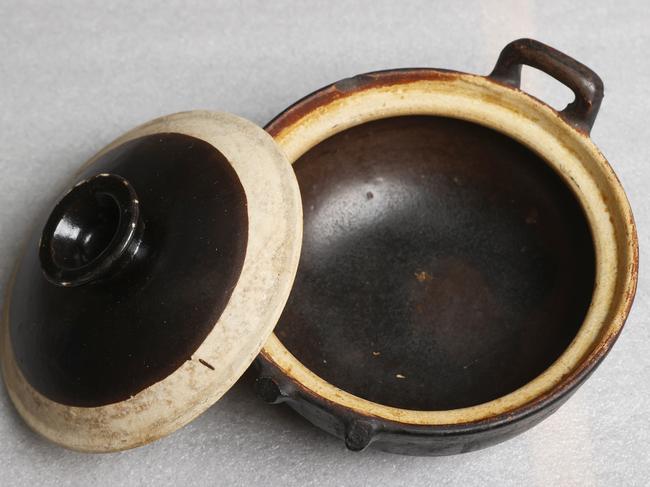
Everett didn’t manage to find any of her relatives, but she says just being able to visit the village was precious enough, and she couldn’t wipe the smile off her face as she and her friend travelled back to Guangdong on the bus that evening.
“I always grew up knowing I was Chinese,’’ says Everett, who was born in Launceston and grew up in Weldborough, in the state’s North East, but now lives in Kingston.
“We always knew about our heritage and it has always been special to me because I grew up with it. My grandmother used to tell me the stories, and it was like I was really there. They were stories from the late 1800s but it was like I was there, physically there, because when I was told those stories over and over again I envisioned it.’’
Everett remembers hearing in-depth tales about many of her ancestors as well as people in the wider Chinese community. Everett also recalls stories about Chinese New Year and remembers learning about traditional customs, including Chinese burial customs.
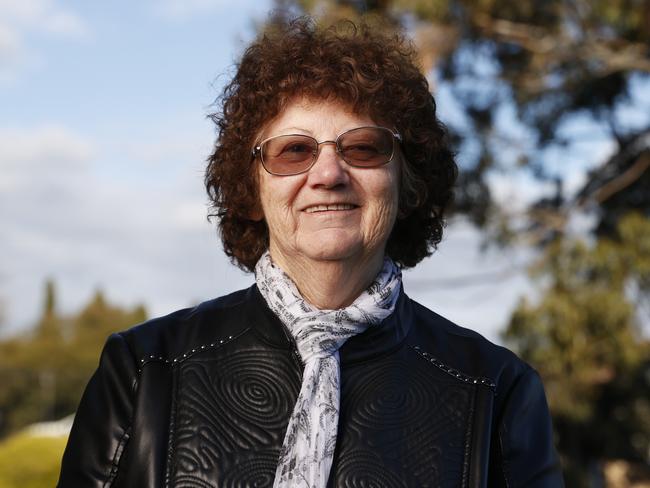
Both her father’s maternal and paternal grandfathers – Chin Tock and Ma Sui – came to Australia from China, first arriving in Tasmania in the 1870s.
Like many, they were attracted to Australia by Victoria’s famous gold rush.
Chin Tock ran a bootmaking shop in Ballarat but after hearing word that Tasmania was a good place to raise a family he moved to Weldborough, continuing to make boots in Tasmania.
Ma Sui also spent time in Ballarat, working as a gold miner, before returning to China. He then came to Tasmania to live, where he worked as a tin miner in the state’s North East and later ran a shop in Launceston.
Everett’s father later continued the family tin mining tradition, working as a miner up until 1956, so Everett grew up with a strong understanding of what conditions were like in the mines.
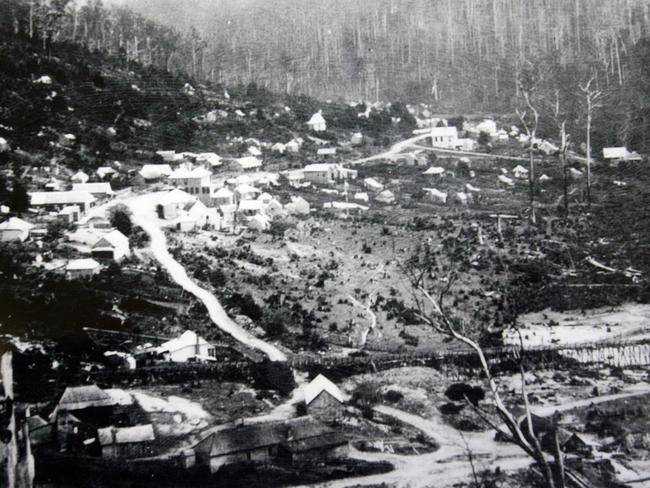
“It was a wet, cold job and a hard job,’’ she says.
Some of Everett’s family members returned to China, but others stayed in Tasmania.
Everett has raised 13 children, including her children and stepchildren, and has 36 grandchildren and 10 great grandchildren, who have all learnt about their Chinese heritage.
“They have grown up with the stories I passed onto them, the stories that were passed on to me,’’ Everett says.
She says despite having always felt a deep connection to her Chinese heritage and ancestors, some people questioned her ethnicity when she was growing up.
“When I looked in the mirror … people didn’t believe I was Chinese,’’ Everett explains.
“My mother’s side has got strong Scottish heritage and that’s where my looks come from, I look like my mother. My sister got dark hair and dark eyes and olive skin. But interestingly I always felt more of a sense of being Chinese than she did.’’
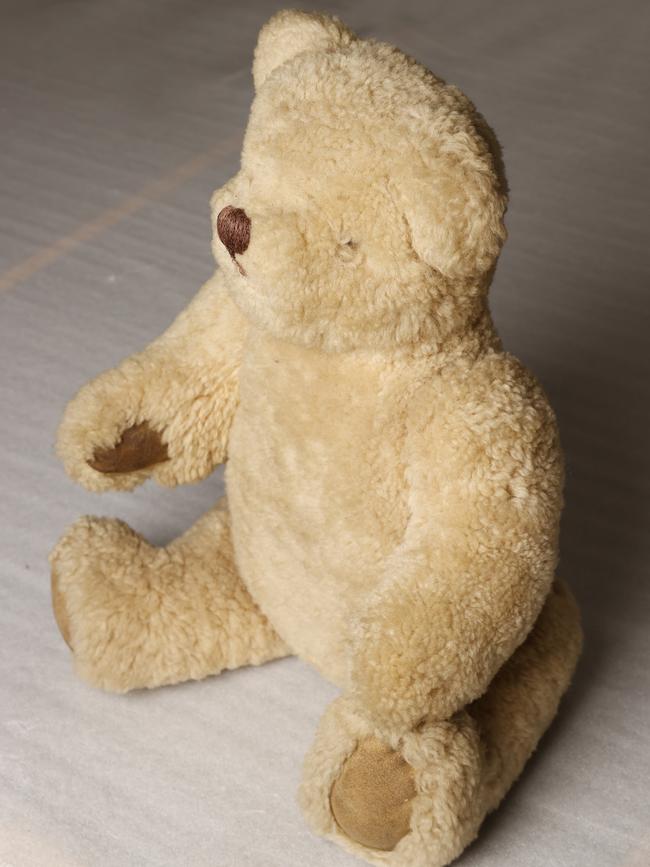
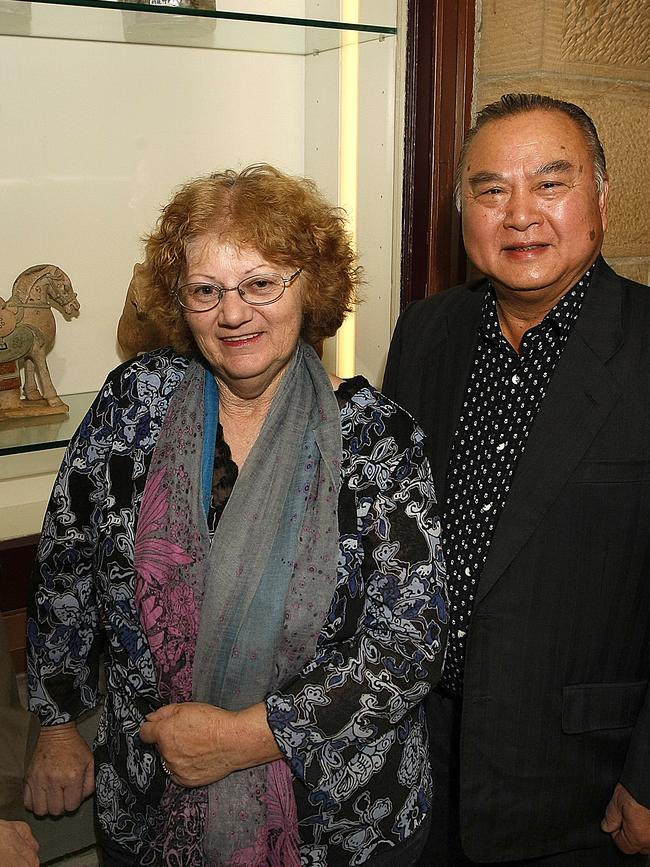
Which is one of the reasons Everett has visited China so often over the past 40 years.
“When the kids were little I didn’t get to go much at all, but after my family grew up and moved out, I was able to visit once or twice a year,’’ she says.
“I just had that pull to keep going back. There are so many different ethnic groups and so many different places to see. It’s like going to Europe and going to all the different countries like Germany and France. China is not just Beijing and the Great Wall, there are so many different parts of China, I always go somewhere different each time that I visit.’’
Some of Everett’s family members will visit the TMAG exhibition opening on July 19.
Everett says having a physical memento like the handkerchief was certainly special, and it was even more special to be able to share it with others through the exhibition.
“I’m excited to be part of anything that shows the history of Chinese people in Tasmania and their contribution,’’ she says.
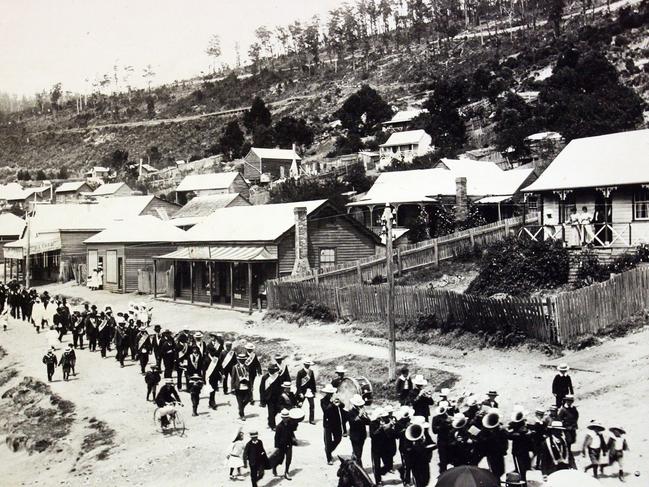
Everett says many Tasmanians don’t actually know much about the state’s Chinese history or the fact that about 2 per cent of Tasmania’s population has Chinese ancestry. So she considers exhibitions like Home: Here and Now hugely important for spreading the history and cultural knowledge of Chinese Tasmanians more widely.
Home: Here and Now is a touring exhibition created by the Tasmanian Museum and Art Gallery which explores and celebrates the many ways Chinese descendants live and belong in Tasmania.
Evidence of Chinese settlement in Tasmania can be found from the 1830s, following the arrival of nine Chinese carpenters. During the tin mining boom of the 1880s, Tasmania’s Chinese population of 1500 (1.3 per cent of the total population) mostly lived in the rural North East.
But everywhere that Chinese people have settled, the seeds of belonging have been sown. In the 2021 Census, 12,300 people in Tasmania reported having Chinese ancestry. This makes up about 2 per cent of the Tasmanian population.
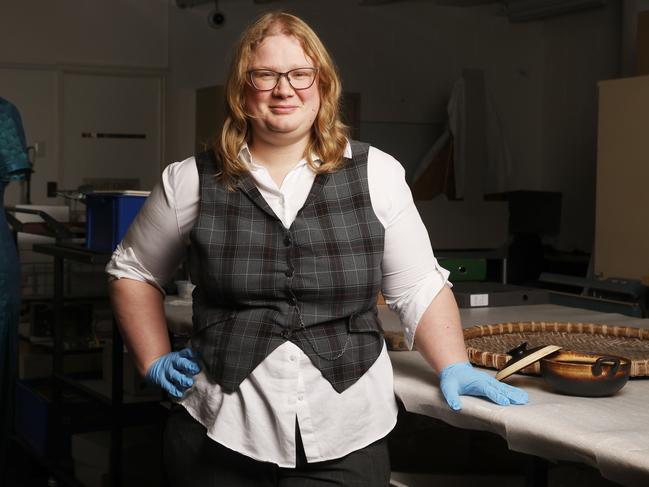
TMAG director Mary Mulcahy says for the new exhibition, TMAG staff spoke with recent migrants as well as fourth-generation Tasmanians of Chinese descent.
The fascinating exhibition brings together oral histories, personal artefacts and honoured objects that tell the story of the life of Chinese descendants in Tasmania. Included are items from the Guan Di temple, which was originally located in Weldborough, traditional cooking and gardening implements and other domestic materials.
“I am delighted that TMAG is hosting an exhibition that highlights the long-standing relationship between the Chinese and Tasmanian communities,’’ Mulcahy says.
“It’s a wonderful opportunity to showcase precious items from across the state including the Guan Di Temple from the Queen Victoria Museum and Art Gallery in Launceston, our own collection, and personal items from those whose stories are told in the exhibition. It is important that we celebrate the diversity of Tasmania’s people and history and with this exhibition we share the stories of contemporary Chinese Tasmanians, and recognise their ongoing valued contribution to Tasmanian society.”
The Home: Here and Now exhibition is supported by the National Foundation for Australia-China Relations, which works to promote enhanced co-operation between Australia and China. A key pillar of the foundation’s work is engaging Chinese Australian communities.
The exhibition has been curated by TMAG’s cultural heritage team, led by senior curator Isobel Andrewartha, and assistance has been provided by the Chinese Community Association of Tasmania and Tasmania’s Fujianese community.
Tasmania has had a special sister-state relationship with Fujian Province, on China’s south-eastern coast, since the early 1980s, exchanging both cultural and economic delegations.
National Foundation for Australia-China Relations chief executive Gary Cowan says the Chinese community brings a richness to Tasmanian – and Australian – culture that is worthy of celebration.
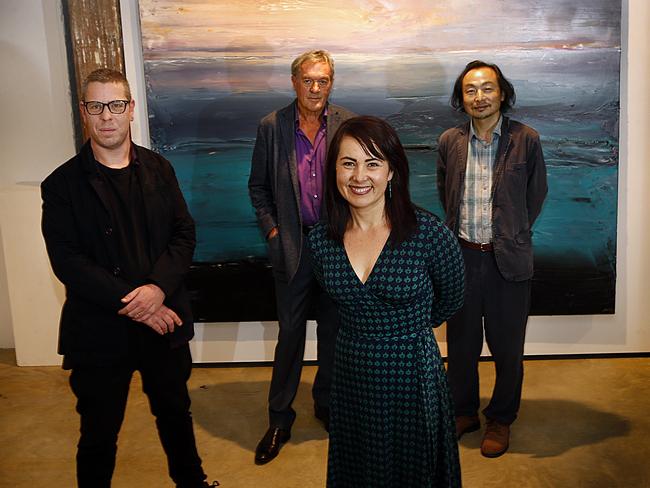
“Australia is home to the world’s oldest continuous culture, home to people from over 300 ancestries, and now home to over one million Australians who claim Chinese heritage,’’ he says.
“We are a better and richer nation for the contributions of our Chinese Australian communities. I encourage you to visit the exhibition and hear the stories of how, over generations, Tasmania has become home to so many cultures and people.”
Li Yang, 33, was born in China’s Shandong Province but has called Tasmania home for the past seven years.
And although she initially came to Tasmania to study, Yang has found herself quickly embedded in the fabric of her adopted home state.
As founder of the Australian International Youth Association, Yang seeks to connect young migrants to the Tasmanian community through volunteering.
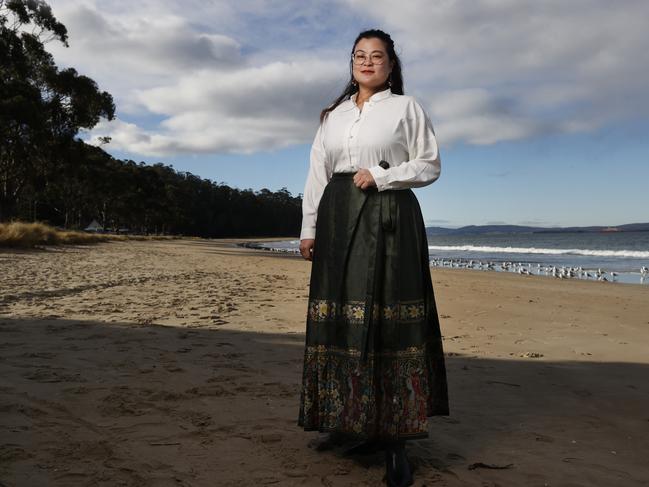
Her not-for-profit organisation has about 1000 registered volunteers, and aims to boost the wellbeing of migrants by supporting them to participate in social and community activities and form friendships, while also giving back to their local community.
Because, as Yang says: “Cultural differences can separate us, but it can also make us stronger when we welcome it with understanding’’.
Yang, who has degrees in marketing, accounting and logistics and a diploma in journalism – got the idea for the organisation while studying at the University of Tasmania.
Staff put a call out for students who wanted to volunteer to be part of Dark Mofo.
Yang volunteered, along with many of her classmates, and seeing everyone “so happy” during the festival made her want to facilitate more volunteering within the community.
“People feel more accepted and more involved when they contribute and get to know what is actually happening within the community,’’ Yang says.
Volunteers make a huge contribution to Tasmania’s economy each year – figures from Volunteering Tasmania placed the economic value of volunteers at $12.1bn in 2023 – and with an ageing population in the state, Yang could see that migrants could help bolster volunteer numbers while also breaking down cultural barriers.
“I wanted to do something, not for myself, but something that could help make Tasmania a better place,’’ says Yang, who also works in a paid role with a disability employment service provider.
Yang first came to Australia for a family holiday when she was 12, but not to Tasmania. She returned to Australia to study in 2012, first in Adelaide and then in Melbourne, and travelled Australia widely before deciding to call Tasmania home.
She says she was attracted to the state’s quieter way of life and the “magnificent” nature.
“A home is not only a place. It’s about a relationship: how you connect with the location,’’ she says.
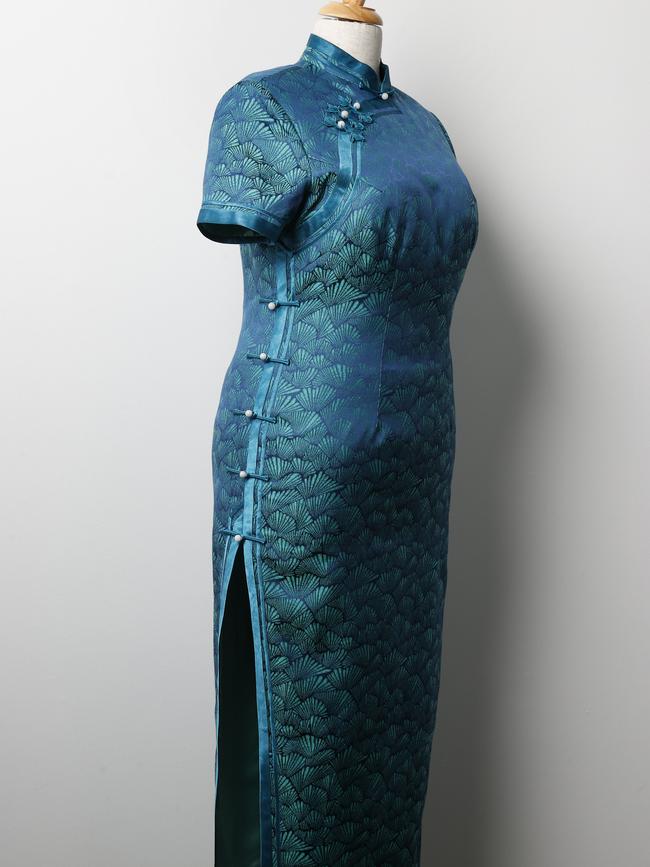
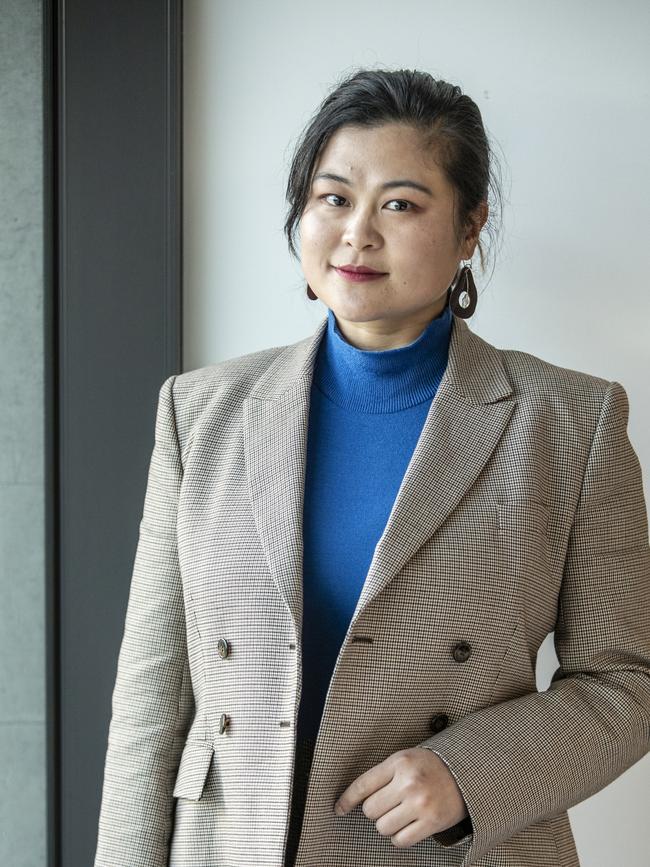
“I found myself quite connected and getting involved in the community and this makes Hobart a special and unique place for me to stay.”
Now living at Dynnyrne, Yang has won a string of awards for her work – including the 2023 Study Tasmania International Education Industry Partner of the Year Award, the 2022 City of Hobart Citizen of the Year Award and a 2021 Tasmanian Volunteer Award.
At first, she wore corporate attire to award ceremonies and other formal events, but then realised she should be embracing her Chinese heritage.
“Now, if I’m invited to a public event, I prefer to dress up in traditional Chinese clothes,’’ Yang explains.
One of the traditional dresses that she wore to an awards ceremony in Tasmania last year will be displayed as part of the Home: Here and Now exhibition.
The silk Shanghai qipao dress was made by a tailor on Middle Huaihai Road, and crafted especially for Yang.
“I have spent a lot of time in the community, I help migrant people realise how important cultural identity is … you should be proud of who you are and where you came from,’’ Yang says.
“[When moving to a new country] it’s not about ignoring who you are, it’s about being proud of who you are and making the community more vivid, with more variety and more harmony.
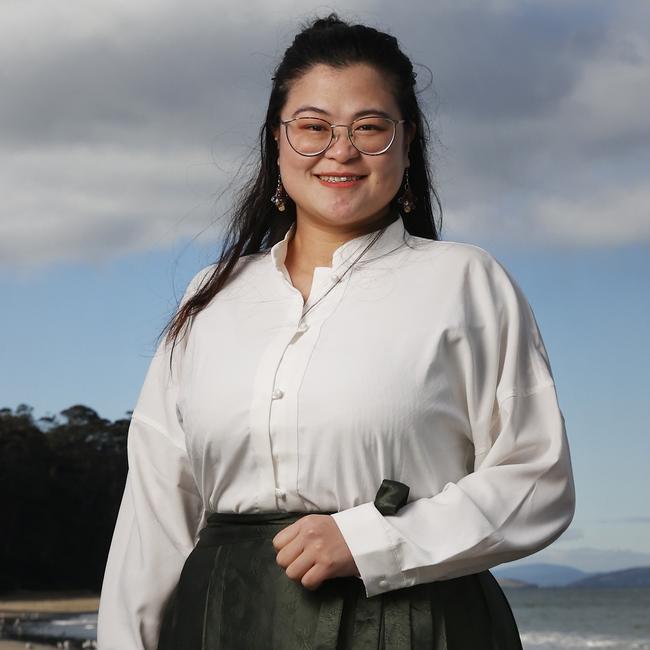
“I want to have a picture posted on social media [in a traditional Chinese dress], showing people that ‘okay, Chinese people are doing some good things for the community’. I want to encourage other people who have different backgrounds to be proud of themselves. And this exhibition shows lots of great things that people with a Chinese background have achieved.’’•
Home: Here and Now opens in the Tasmanian Museum and Art Gallery’s Salon Gallery on July 19 and runs until November 3. Entry is free. tmag.tas.gov.au

Add your comment to this story
To join the conversation, please log in. Don't have an account? Register
Join the conversation, you are commenting as Logout
Tas dream analyst on 13 common dreams and what they mean
She studied zoology and neurobiology before delving into the world of dreams. Now Tasmania’s own dream analyst offers insight into why we dream and what our dreams actually mean.
Good times are on the menu at this North Hobart eatery
This North Hobart restaurant is a great venue for a group – servings are generous and affordable – and the whole vibe is very laid-back and designed for casual, fun times, writes Alix Davis.